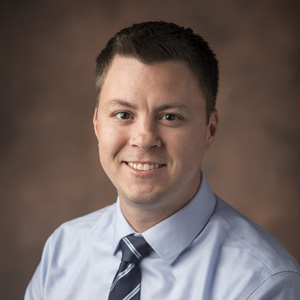
Medication errors are a safety concern during transitions in care, such as when a patient is released from a hospital to return home. Because of this, a Population Health Pharmacy team is piloting a program to improve continuity of care.
The group, which supports the Vanderbilt Health Affiliated Network, has developed a program to communicate with patients soon after hospital discharge, to identify those most at risk for a medication error and to methodically review medications with high-risk individuals. Training in quality improvement processes, which provide the project’s framework, was supported through a grant from the Institute for Healthcare Improvement.
“Any time medicines are prescribed or used, there are opportunities for it not to go the way we anticipate it will,” said Chris Terry, PharmD. “We’ve focused our efforts on the patient’s transition of care for many reasons. In the transition from an acute care facility, there can be lack of coordination between prescribers or a patient might have poor understanding of what happened in the hospital and what exactly they’re supposed to do after they’re back home. There might be side effects if medications have changed. There might also be issues with getting in to see a primary care provider or specialist in a timely manner after their discharge.”
Statistics that support the need for this type of intervention are sobering. Studies indicate that between 15 and 50 percent of hospitalized older adults will suffer an adverse drug event within 30 days of returning home, with most of these events resulting from new medications that were started in the hospital. And the Agency for Healthcare Research and Quality reported that an estimated one in seven patients discharged from U.S. hospitals in 2013 were readmitted within 30 days.
The Population Health Pharmacy team focused their pilot on adults covered by one insurance company who were recently discharged from a hospital, and the pilot already includes more than 100 individuals. The team is assisted by pharmacy students who pre-screen individuals to determine if they would benefit from a pharmacist reviewing their medications with them. Likely candidates for the review are those with complex medication regimens, the elderly and individuals with low health literacy who are at higher risk of having medication discrepancies.
The pharmacist addresses key questions during the review: Is this the most effective medication? Is this the safest medication choice? Can the patient access the medication and are they able to take it as its prescribed? Is the medication indicated or necessary for them to take?
“We’ve expanded the traditional definition of medication reconciliation to include a full assessment of what a patient’s medication needs are, rather than just obtaining a basic list,” said Erin Neal, director of Population Health Medication Management. “We’re identifying specific problems needing to be resolved. There has been research that shows by having pharmacists intervene during the post-discharge period, readmissions can be reduced by up to 30 percent.”
The team is already seeing improvement in patient care as a result of their work. For example, a patient with multiple sclerosis who was experiencing chronic pain was reconnected with her primary care provider when it was learned that it had been quite a while since she had an appointment. She was also given a prescription for a new blood pressure medication, education on monitoring her blood pressure at home, and a statin for secondary stroke prevention.
Another patient who had been hospitalized for a flare up of chronic obstructive pulmonary disease (COPD), who also had congestive heart failure, diabetes and coronary artery disease, was referred to a Population Health diabetes management program for better disease management and counseling. Several medication changes were also made and an important medication that had mistakenly been stopped was restarted. Patients have responded positively to the program, calling the pharmacist outreach a “godsend,” Neal said.
“While we’re thinking about the medicines, we’re also thinking about it from the patient’s perspective,” Terry said. “They’re the ones taking the medicine, going to the hospital, and dealing with all the things they have to deal with. If we can make it easier for them, we can make it easier for everybody.”
“We’ve been working on medicine optimization or medicine reconciliation for several years, but our work as pharmacists has really begun to take off as we all move toward a value-based care model,” Neal said. “This work is especially critical for high-risk patient populations. While there may be multiple prescribers involved in their care, the pharmacist is able to see the big picture.”
The Population Health Pharmacy group plans to expand their pilot to larger patient populations in April and continue to fine tune their outreach process, involving nursing staff and social workers, depending on patient needs.

















